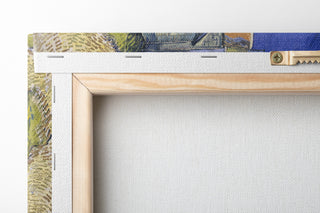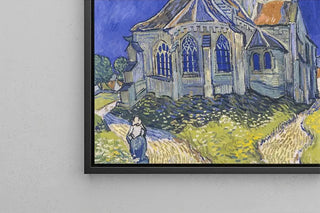A yellow caterpillar - Herman Henstenburgh

A yellow caterpillar: the meticulous observation of Herman Henstenburgh
The composition of A yellow caterpillar reveals a naturalistic precision where the texture of the hairs and the delicacy of the shadows respond to each other. The yellow and green tones, applied with a subtle touch, create an atmosphere both scientific and poetic, like an invitation to approach and contemplate. The mastery of the brush highlights the contrast between the fragility of the insect and the vigor of the foliage, producing an impression of suspended movement. This sensitive interpretation transforms the entomological study into a decorative and emotional scene, ideal for capturing attention in any interior.
Herman Henstenburgh, 17th-century painter-naturalist
Herman Henstenburgh, active in the 17th century, is recognized for his workshop work combining scientific rigor and aesthetic finesse. Influenced by the Dutch Golden Age tradition, he developed a keen sense of detail and staging of natural subjects, bringing his work closer to the cabinets of curiosities of the time. His compositions, often devoted to plants and insects, testify to attentive observation and mastered technique, where the clarity of the drawing serves the truth of the motif. The importance of these studies lies as much in their documentary value as in their ability to decorate and awaken curiosity.
A decorative acquisition with multiple assets
The art print of A yellow caterpillar stands out as an elegant choice to enrich a living room, office, or bedroom, bringing a touch of nature and art history. Faithful to the original, this painting reproduces the precision of details and chromatic richness, thus offering a canvas that captures the eye without overloading the space. Whether you are looking for a centerpiece above a sofa or a discreet work for a hallway, this art print combines quality, authenticity, and decorative impact. Investing in this canvas is inviting into your home a work that combines technical know-how and aesthetic sensitivity.

A yellow caterpillar: the meticulous observation of Herman Henstenburgh
The composition of A yellow caterpillar reveals a naturalistic precision where the texture of the hairs and the delicacy of the shadows respond to each other. The yellow and green tones, applied with a subtle touch, create an atmosphere both scientific and poetic, like an invitation to approach and contemplate. The mastery of the brush highlights the contrast between the fragility of the insect and the vigor of the foliage, producing an impression of suspended movement. This sensitive interpretation transforms the entomological study into a decorative and emotional scene, ideal for capturing attention in any interior.
Herman Henstenburgh, 17th-century painter-naturalist
Herman Henstenburgh, active in the 17th century, is recognized for his workshop work combining scientific rigor and aesthetic finesse. Influenced by the Dutch Golden Age tradition, he developed a keen sense of detail and staging of natural subjects, bringing his work closer to the cabinets of curiosities of the time. His compositions, often devoted to plants and insects, testify to attentive observation and mastered technique, where the clarity of the drawing serves the truth of the motif. The importance of these studies lies as much in their documentary value as in their ability to decorate and awaken curiosity.
A decorative acquisition with multiple assets
The art print of A yellow caterpillar stands out as an elegant choice to enrich a living room, office, or bedroom, bringing a touch of nature and art history. Faithful to the original, this painting reproduces the precision of details and chromatic richness, thus offering a canvas that captures the eye without overloading the space. Whether you are looking for a centerpiece above a sofa or a discreet work for a hallway, this art print combines quality, authenticity, and decorative impact. Investing in this canvas is inviting into your home a work that combines technical know-how and aesthetic sensitivity.





